|
|
Welcome to my travel log! You will find here a lot more than in the travel reports, stripped from political correctness. Enjoy! 
Jun 12, 2001 02:00 PM Madagascar - Ranomafana
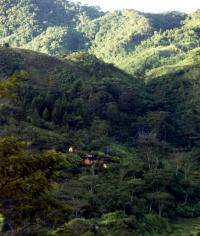 On the way to Ranomafana National Park via Ambositra, I met even more people smiling, waving and wanting hand shakes. Very good looking, too. Kids along the road waving and shouting 'vazaha' from the top of their lungs made me believe that I was on a perfect holiday! There were plenty of children in different age groups and very beautiful.
On the way to Ranomafana National Park via Ambositra, I met even more people smiling, waving and wanting hand shakes. Very good looking, too. Kids along the road waving and shouting 'vazaha' from the top of their lungs made me believe that I was on a perfect holiday! There were plenty of children in different age groups and very beautiful.
In the villages I was passing through, I could see children working very hard from the age of six. They were doing all different kinds of work: from watching and walking the zebu to working in the field with spades, axes, ploughs, carrying water and looking after smaller sisters and brothers carrying them on their small backs and shoulders. I saw small girls hammering rice with big poles, larger than them, spitting on their hands from time to time to have a better grip on this tool. They were so little but with the expressions on their faces, it looked like they had been doing it for years.
On the way, which was my second day driving through the central Madagascar, I learned about the police and their corruption. There are three police forces on the island:
Police
Gendarmerie
Police Militaire
All of them are corrupted and it appeared to me that this was common knowledge, well almost common, because I heard this from drivers and not many Malagasy people are actually driving or moving around. Those, however, who do happen to be on the road every now and again, know about the police practice. The most frequent doing include false charges on some imperfections of the vehicle or strong ‘request’ for a souvenir from tourists. I had to hide my camera under a jacket in order to avoid paying a souvenir fee to the police.
During my journey, I think I was stopped almost fifty times by different kinds of police forces controlling the vehicle movement on the roads or guarding the entrance to villages and towns.
The day started very nicely with sun spells in the dry mountainous region of Antsirabe, but as for the 13th it rained all the rest of the day in the rain forest. Well, the morning was fine and only when I arrived, which was, I have to admit, very late, it poured horribly. I arrived late in the park due to a mistake in calculation of the driving time.
The mistake was not because of math errors. I was one of the best in mathematics since I can remember. This was due to a lack of proper information about the road conditions. The road was not difficult, it was impossible, and should not be done with 2WD car! In addition, as I mentioned, it was raining so the sandy track became a muddy track, slippery and dangerous.
The speed varied between 5-10 km/h (3.1 – 6.2 mph) – the speedometer dial did not even move from nought! I was really unhappy that I had to go through this in the rain as the visibility was not good, and I could not take pictures at all! The road was so bad that sometimes we needed to stop, get off and make a decision which way to risk the gap between the car and the road.
Such slow speed was getting on my nerves so badly that it must have contributed to the fact that I was not orgasmy excited with the scenery. I almost regretted that I went there. Well, I changed mind in the morning next day, soon after sun rose making perfect light for photo shooting and revealing awesome landscapes!
It is a rain forest but it doesn't look like the jungle with the rivers of Amazon in the South America or the Zaïre (Congo) on the Africa's continent. There are plenty of trees, bushes and blossoming plants but they are all different and most of them grow nowhere else on this planet but in this particular park!
Trees look like trees but they've got different trunk and leaves. There are for example 15 endemic species of bamboo in this park. Some of them contain Cyan Dioxide, so it is amazing how lemurs living in this area recognise what they can eat and what they cannot touch because of the poison. Palm trees also look different. So do fern trees that grow like normal trees, with the trunk and all the rest. I am not a botanist but I bet a real one when visiting Madagascar must feel like on another planet.
Golden Bamboo Lemur is one of the species of the Madagascar’s endemic lemurs and is very rarely viewed. This particular specie was only discovered in 1986 and since it is seen only once or twice a year. I was so fortunate to see one. I even took a photo of it but it did not come out good at all.
Because of its extreme rarity, it lives only in Ranomafana region, the fact that I spotted one had to be immediately reported to the American-Malagasy research station of the park. I think it is exciting to be on a official register of people who have seen one of the rarest animals on this planet.
Unfortunately, I haven't spotted any other lemurs that day but the nocturnal Mouse Lemur. This was because of the rain and lemurs, similarly to cats with the exception to tiger that swims beautifully, don't like to be wet so they stayed in their hideouts!
I did not particularly choose the best time of the day to view them, but as I mentioned earlier I was very late arriving in the park. Also, the people in the park office thought I was nuts wanting to take a walk in the rain after five o’clock in the evening. They immediately asked me if I wanted to combine my late escapade with a night walk. I did!
By the way, that was my first national park visit in Madagascar. I had a special passport for the national parks, and I wanted to use it properly.
Theodoret was the name of my guide. Jean Theodoret, actually, who prefers to be called Theodore. He was 22 years of age and very knowledgeable (working with the WWF researchers) and speaking impressive English, very good looking, not very tall, fit, black guy (like most of the Malagasy people) of a nice shade of brown skin and very polite. He made an impression of a good and smart boy. His name (and one of his four brother's) is in the Hilary Bradt's guide.
Very professionally he showed me the park naming the plants in Latin and English and providing some statistics, which I could not remember though. We also managed to bait the nocturnal fossa with a tin of sardines after it got completely dark.
Walking in the rain forest in almost complete darkness we discussed various subjects. One of them was other tourists coming to Ranomafana National Park. This is what I found about Italians. The reputation of Italian tourists is very bad on Madagascar. They come across as very arrogant (not a surprise), dirty and leaving litter on the trails (not a surprise whatsoever), and particularly noisy (definitely not a surprise) disturbing the lemurs and other animals in the forest. Then, they try to complain that they could not see any of the magnificent primates. Serves them right! I have to say that I hate that not only do Italians litter their own country but also have no respect to other cultures.
The hotel, in which I was staying, was beautifully located in the jungle amongst various types of palm trees, banana trees and many other endemic plants. It was situated on a cliff or slope of some sort, just beside a small but fast river. It looked amazing and truly exotic although I arrived at the hotel well after sunset.
The bungalows were comfortable and quite spacious, made of palm tree wood and bamboo cane. They were connected one with another by a wooden or bamboo footbridge or scaffolding suspended above the river. There were two rooms in most of the bungalows. One was a small bedroom, the other was a seating room, or a second large bedroom. The on-suite bathroom, or rather shower room made it look very luxurious compared to the landscape.
The surroundings are extremely beautiful and the location of the hotel feels like it was taken from a low quality, unmotivated story but extraordinarily photographed Hollywood-produced adventure films (take ‘Six Days, Seven Nights’ as an example), in the middle of the jungle, by a small waterfall. Yes, this waterfall is the only downside of the place since the water is not at all quiet at night.
The restaurant, however, in contrary to what they wrote in the guide books, was not very good at all, although the interior was well above the Malagasy average of standards.
I decided to get up early and set off soon after sunrise, just about 6.30. Having had the experience of a bad road o the way down, and knowing that it never stopped pissing down in the evening, I was trying to imagine how much worse the road could get. The thought was giving me serious chills.
After I got up it occurred to me that shower with candles might be romantic if in twos. There is no electricity before dawn in the park so when getting up early, one needs to use the candles that are kindly provided with matches and keys to the bungalow. The candlelight looks somewhat unusual in the shower however it requires skills. I would have practiced before I left London, if I knew that this would be the scenario.
To date I am not sure if I managed to wash all the necessary parts of my body, particularly when it was still not the very optimal amount of body to wash…
|
Jun 11, 2001 02:00 PM Madagascar - Antsirabe
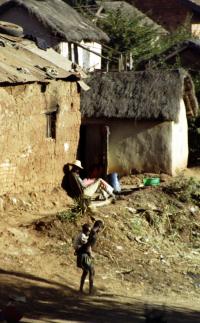 Nice town on a sunny day it is, Antsirabe. It’s the size of one and a half of the coastal town of Ustka in Poland or twice as the size of the historical town of Diest in Belgium. There is one wide avenue – Rue de la Independence, most of the other streets are quite narrow, where only two carts would fit. One main road is called Beniowski – another Slavic flavour of Madagascar.
Nice town on a sunny day it is, Antsirabe. It’s the size of one and a half of the coastal town of Ustka in Poland or twice as the size of the historical town of Diest in Belgium. There is one wide avenue – Rue de la Independence, most of the other streets are quite narrow, where only two carts would fit. One main road is called Beniowski – another Slavic flavour of Madagascar.
The southwestern part of the town is very poor, looking like a small village with poor small houses and dirt streets. There are plenty of kids in extremely dirty clothes, one kid carrying another. I wandered there on my long afternoon walk and I could not believe how radically the surroundings changed. I was not entirely sure whether it was ok to walk in there and I could recognise if I actually stepped into someone’s property. I tried to keep to the street, but I could not tell what was the street and what was already someone’s front yard, or backyard. People were however calm and it looked like my presence was not really disturbing them. I am sure they were thinking ‘What the heck is this vazaha looking for here? He must have got lost or something, because there is absolutely no reason for vazahas to be coming here.’
Well, I have to agree with them that it must have looked very strangely, because although I was carrying my dreadfully heavy but sexy Nikon camera I was not taking many pictures at all. I did want to, but I was not sure if it was ok to photograph people in their poverty. That’s why it could have looked like I was not interested in the surroundings. But I truly was!
The centre of the town is more concrete with villas, large official buildings and some colonial hotels as well. The railway station at the top of the Rue de la Independence is quite nice, a lot nicer than most of the stations in Europe in fact. So what? – one may say. Trains do no longer run and the building doesn’t serve its purpose anymore. It became more like ghost-building, abandoned, standing alone, closed.
I took a stroll around the entire town, walking in places that maybe I should not have really gone to. On many occasions, I was the only white person in the street – forget about other tourists! Still, every time I met someone, they said hello and smiled nicely.
I walked as far as the market with livestock. They mostly traded colourful cocks over there, which walked around the designated area in the market square showing off so the potential buyers could look at them properly. There were so many of them – very impressive!
Other animals were sold there as well, including goats, chickens, ducks, geese, pigs, but not zebu, because zebu are always sold on a special zebu market. Zebu is the most important animal on this island and therefore receives special treatment.
Pousse-pousse were everywhere again, but a lot smaller than those in Toamasina and in so much lesser amount. This time, rickshaws in the mountainous town are considered unusual, because traditionally there were present in the coastal towns like Toamasina, Toliara, Mahajunga. In the mountains it is no longer this easy to pull a cart with up to three people and their market shopping. Actually, I don’t believe it is easy anywhere really.
In Antsirabe, I found that the guys who run the pousse-pousse do not own them at all, but they rent them. The daily rental fee is (£1.00) 10,000 MGF, therefore to just break even, a guy needs to get ten customers a day. This is why they are so keen on taking on customers, and in particular vazahas who usually do not mind paying more than two, three times the fee locals pay. It is a very hard work on the hills and I guess all the tourists realise that and without thinking twice put a nice tip on the top of the already special vazaha fare.
|
Jun 10, 2001 02:00 PM Madagascar - Lac Tritriva
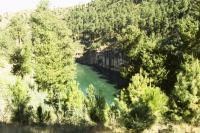 Tritriva Lake is on the way from Antananarivo to Antsirabe and it is very mystic and beautiful. Nice colour of water! I think it could be described as sapphire mixed with deeper shade of green and blue altogether at the same time, maybe even with a little hint of turquoise. The banks are steep and nicely grown over with trees. This is a volcanic lake and there are number of colourful stories about the depth of this reservoir.
Tritriva Lake is on the way from Antananarivo to Antsirabe and it is very mystic and beautiful. Nice colour of water! I think it could be described as sapphire mixed with deeper shade of green and blue altogether at the same time, maybe even with a little hint of turquoise. The banks are steep and nicely grown over with trees. This is a volcanic lake and there are number of colourful stories about the depth of this reservoir.
There is also a legend involving this lake. A long, long time ago, two young people in love were refused to marry, so they decided to commit suicide jumping into the lake. As a consequence of this happening, two ghosts may be seen in a close vicinity of the lake. The existing literature states also that it is fady to swim in the lake, but the kid guides say it is not. I was unable to confirm this with the locals.
Access to the lake is no longer free as the local community decided to open there a visitors park and charge foreigners MGF 10,000 (£1) per person. It would not normally be worth creating a park there with an entrance fee, because it is quite small and more a picnic place than anything else. The lake and surroundings are in fact extremely attractive emanating with overwhelming tranquillity. This could be a perfect day escapade and escape from the town if the whole herds of annoying kids trying to sell eggs of stones and hats of hay weren’t there.
The village of Tritiva is also very interesting and it looks like it’s been located in the middle of nowhere. It was one of the first villages where I thought it was absolutely amazing to see so many kids in one place. Cute, calm, hardworking. It was then that I found there are on average 12 kids per family, though others may claim that it has recently dropped to only 7. Both 12 and 7 are magic lucky numbers in Madagascar, by the way.
|
Jun 09, 2001 02:00 PM Madagascar - Ambohimanga (Rova)
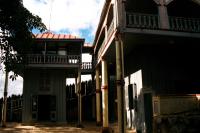 Rova at Ambohimanga, at the other hand, is very, very modest. Called the King's Palace but it is just a larger, taller house. It's all very dark - almost black, both from inside and outside. Built in the eighteenth century it does not look very sophisticated. Inside, there was one room only with the place to cook food – right in the centre.
Rova at Ambohimanga, at the other hand, is very, very modest. Called the King's Palace but it is just a larger, taller house. It's all very dark - almost black, both from inside and outside. Built in the eighteenth century it does not look very sophisticated. Inside, there was one room only with the place to cook food – right in the centre.
There, two beds – the king’s higher than the queen’s and pole with steps so the king could hide up, close under the roof. He would hide from not the very welcome guests who, when visiting, would only hear the king’s voice without the ability to see him at all. It was a very smart idea. The ‘palace’ makes an impression anyway, given the stage of how much civilisation was then advanced on Madagascar.
The Queen's Palace is a hundred years younger and already a lot different! It looks like a real summer residence with nicely carved wooden facade and interesting furniture in several rooms. The furniture has come from different European and Asian countries. Wandering around the palace is like visiting any random museum in a European country. The furniture looks very familiar and I am sure it was very comfortable for the Malagasy queen.
There are a large number of things the queens of Madagascar received from the Queen Victoria, the Queen of England. Some of them are quite clever. One of them is this large wardrobe cabinet with hidden doors leading to the escape route, and a cupboard with built-in small rectangular mirrors. This clever piece of furniture if placed in the room correctly, would allow the queen to see in the mirrors whether anyone was trying to poison the food that was on a table without having to look around too obviously.
This ‘Blue Hill’, this is exactly what Ambohimanga means – (and in fact it is actually dominated by blue colour), is treated as a very mystic, almost holy, place. For that reason, it had been off limits for tourist for many years before. Now, the Malagasy government got a lot smarter and decided to make some money of it. They charge quite much for visiting this very small place. It is like an average museum place with some above-average view from the top of the hill. Nothing more. Well, it is to the Malagasy people like the Tower of London is for the English, Stirling castle for the Scottish, Wawel for the Poles or Kremlin for the Russians. It therefore does carry some weight of history with it.
It is also interesting to see and find about the religion of the Malagasy people, the monarchy and its development throughout the years. Rova at Ambohimanga remains for the local people a very holy place and people are still praying in the king’s palace. They knee on the floor in one of the corners under which the king’s bed is (the bed is elevated, so there is room underneath) facing the corner. They pray aloud with a lot of passion. They pray for good fortune of their families, for decent harvest.
The Malagasy people believe in the great powers of ancestors and that they can help. It is amazing how strong the belief is and passionate people are about it. The woman, whom I saw praying there, finished, left the palace, took a bow and smiled to me. I hope the ancestors will help here.
|
Jun 08, 2001 02:00 PM Madagascar - Antananarivo - the second landing
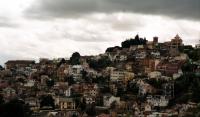 In the downtown of Isoraka, one of the central districts of Antananarivo, there are some decent shops and surprisingly good quality hotels, like Colbert or Ibis. There is Champion supermarket accepting visa cards and all kinds of banks with all different levels of service; from very slow – taking up from 5 hours to process a cash advance on a credit card to extremely efficient, stealing just a minute of your time.
In the downtown of Isoraka, one of the central districts of Antananarivo, there are some decent shops and surprisingly good quality hotels, like Colbert or Ibis. There is Champion supermarket accepting visa cards and all kinds of banks with all different levels of service; from very slow – taking up from 5 hours to process a cash advance on a credit card to extremely efficient, stealing just a minute of your time.
The centre is also packed with street traders, beggars and taxis – old Renault 4L.
As being situated on few large hills, it is difficult to believe, but the city of Antananarivo is dominated by a royal castle, or, rather, ruins of it. The Royal Castle of Rova, at the top of the Rova hill is very impressive although it burned down few years ago and no longer shines with glory over the city. However, the ruins do look impressive. One can imagine how magnificent the castle must have looked like when it was in full glory. One should remember that Madagascar has always been one of the poorest countries in the world. So it must have taken a lot of effort to build a castle of such a scale.
The hike to the top is, in contradiction what the travel guides state, very easy and the route passes some excellent examples of architecture, including number of museums, smaller castles and palaces, university and lyceum (high school) full of young organic material…
|
Jun 07, 2001 02:00 PM Madagascar - Toamasina (Tamatave)
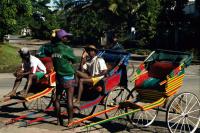 This pretty nice town of Toamasina on the east coast is also the largest and the most important port of Madagascar. The seaside promenade is long and quite attractive with the view on the ocean and a large port, which provides a lot of evidence that it is an important one since some huge vessels park literally on the beach! The beach is also quite nice and large.
This pretty nice town of Toamasina on the east coast is also the largest and the most important port of Madagascar. The seaside promenade is long and quite attractive with the view on the ocean and a large port, which provides a lot of evidence that it is an important one since some huge vessels park literally on the beach! The beach is also quite nice and large.
The beach is not only utilised as a vessels parking lot, but also as a football pitch. It is big enough and I have to admit that I did not realise straight away how important this football matches must have been as I stepped several times on the ‘pitch’, which was not very well received. I should have known better seeing the teams dressed in proper football uniforms. This is what happens when you are not a ‘kill-for-it’ football fan. Nevertheless, it is not normal to play important matches on the beach?
Furthermore, I thought it is again quite unusual for a Malagasy town to have wide and long avenues, most of them planted with palm trees. Normally, like in Antananarivo for example, streets are narrow, dark and practically without pavement. Not in Toamasina! It is quite evident that before 1994, when the Cyclone Geralda stroke the island with exceptional ferocity, this town had been an urbanistic pearl of Madagascar.
So far, so good, but one of the most terrible annoyances of Toamasina, however are the whores along the main beach avenue. They are all extremely beautiful and disgustingly aggressive. I honestly don't know what they are counting for! All tourists do know that AIDS is a serious problem in Madagascar, where, in addition, there is still little publicity of illnesses passed through exactly what the whores do.
Although there is no evidence that AIDS has spread out widely on the island, however there has been only little official reporting on this matter. The prostitutes cruise the seaside boulevard only during the hours of darkness and therefore during the day the seafront is safe and relaxing. Once one chooses to visit the beach in the night, however, I have tested two effective ways to get rid of the hookers: it is enough to say that this is fady (superstition, taboo) or be very specific that she rather would have to pay you since there are so many other girls interested in having sex with a ‘vazaha’.
Toamasina is the town in Madagascar with the largest number of pousse-pousse (rickshaws). They are more than ordinary taxis. The owners of the pousse-pousse are quite aggressive (in a friendly way, however) in inviting tourists for the ride. But it is locals who mainly use them. Tourists are obviously charged more, but given the fact that it is a hard work I believe 15p per kilometre (24p per mile) it is not a lot and since Malagasy people need the money more than I do, I just didn't care being charged – even twice as much. At the other hand, Czechs in their country also charge tourists more for the same services than they charge themselves!
Francis was one of the rickshaw-ers to give me ride all over the town. Until I stepped on that cart, I was very successful in saying ‘no, merci’ with my best ever smile to all other entrepreneurs. But this Francis, somehow ‘simpatique’, was not very pushy just asked why not, and promised an interesting tour, but most importantly he was younger than me. That was the principle I decided to apply – I could not let an older person pull the cart. As I had a lot of free time and did not exactly know what to do, I decided to go on the ride with Francis. He was ever so happy to take me.
It was the right choice. This poor lad took me for the tour not only in the town but also to the Canal des Pangalanes, where people live on boats or in wooden houses at the banks of the canal. Had not taken the on the offer to go on the ride, I would have never got to see the Canal. I heard about it, but I was not sure how to get there.
It was amazing what I saw there – it had the National Geographic feel and look. I took very nice pictures there and therefore I was very happy.
Every time we passed some other pousse-pousse, I could see the little bit jealous looks of the other rikshaw-ers. I would like to speculate that there were two main reasons for this jealousy. First, something’s telling me that this was the main one, that Francis had a job with a vazaha, so for a good pay – better than theirs. Second, that I was on my own and Francis did not have to carry the entire family with their shopping from the food market, like most of the others. I could also see and hear that the others were commenting something, usually with a smile, on which Francis would react with a grin.
I gave Francis a very nice tip, which made him very happy, too. We were even then and both happy! Well, I just though that the whole £1 (MGF 10,000) for the half day trip with such a beautiful scenery, a very hard work, no matter how fit Francis must have been, was a bit too little. And because he had to provide for his entire family, I was convinced that this was the right thing to do. I didn’t care what the Lonely Planet said about overpaying or over tipping the locals. He said that I was his friend and squeezed my hand in the friendliest way he possibly could.
Then, later that day, I must have thanked thirty other guys, young and old, trying to explain them in many different languages that I had already exhausted their colleague and seen entire town plus the entire suburbia. I had an impression that even though they understood well, they were still pretending that they didn’t and chose to take their chances following me for at least a quarter of the town.
I almost got used to that and tried not pay too much attention, but they would follow me everywhere, to the park, to the bar to the restaurant. It was a bit intimidating in the end, it does not matter how polite and patient they were.
|
Jun 06, 2001 02:00 PM Madagascar - Nosy Boraha to Toamasina (Tamatave)
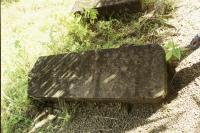 A 20 seater Twin Otter aircraft usually operates flights from Nosy Boraha to Toamasina. It is an experience that should always be recommended to any at least moderately adventures traveller.
A 20 seater Twin Otter aircraft usually operates flights from Nosy Boraha to Toamasina. It is an experience that should always be recommended to any at least moderately adventures traveller.
I am sure that everyone else would also try to exercise as much imagination as possible, trying to understand the physics about flying, trying to calculate the length of the wings and then multiplying it by the strength or thrust of the prop-engines, dividing it by the sum of the people on board multiplied by the g-force of the planet. Calculation like that without a calculator is a challenge on its own and combined with waiting and watching the actual aircraft landing doubleplusexciting!
At the airport, before they let you on board, it already starts to be very interesting and highly unusual when apart from the luggage they also weigh you. It gives the first thrills, stimulates the imagination (particularly if you yet have not seen the plane) and it is quite funny. Well, in my particular case, it was also, hmm... motivating!
There will always be locals observing you closely and examining the amount of your luggage. If you happen to be smaller than average and not weighing a lot, plus your luggage looking lighter than others, many of the Malagasy people would gather around you, even follow you to the toilet, if they have to, in order not to lose you from sight and then upon the check-in procedures and weighing they will claim the luggage allowance you would not use.
The aircraft itself looks fine, but to observe how it lands definitely gives you strength!
There are one or two pilots and one additional piece of crew, who doesn't give security briefs or anything, which would resemble a safety demonstration. The person does nothing, as there is no room in the cabin for anything! One can keep the hand luggage on one’s lap, or one’s neighbour's lap, or anywhere one wishes.
I decided to sit at the emergency exit and kept one bag on the floor under my feet, the camera tripod leaned on the emergency exit and the other bag on my lap. Well the flight was fine, a bit bumpy in the clouds but the views, again, were excellent!
After landing in Toamasina (Tamatave), I immediately acquired one-way flight ticket to Antananarivo. Although I was originally planning to travel by train, it emerged that the train line broke during cyclones and the rail services have been suspended until further notice. So, there was no other way, but flying. Well, there would be other alternatives if I had time. I had very limited time as the date of the eclipse was approaching fast.
|
Jun 05, 2001 02:00 PM Madagascar - Nosy Boraha (Ile Sainte Marie) - eating out
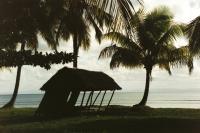 One night I was eating out, it was a difficult decision as the food at the Lakana hotel was delicious, fantastic, luscious, fingers-liking. I decided to stop on the way back from the capital city of Ambodifotatra at one of the advertised eateries, private eateries right on the shore of the ocean. I ordered shrimps on rice, and I kind of regretted that because they were very small and still in shell! Mixed with sauce and rice and still in shell. It was an interesting sensation, crunchy and I had never experienced that before.
One night I was eating out, it was a difficult decision as the food at the Lakana hotel was delicious, fantastic, luscious, fingers-liking. I decided to stop on the way back from the capital city of Ambodifotatra at one of the advertised eateries, private eateries right on the shore of the ocean. I ordered shrimps on rice, and I kind of regretted that because they were very small and still in shell! Mixed with sauce and rice and still in shell. It was an interesting sensation, crunchy and I had never experienced that before.
Coming back, after eating out, during the hours of darkness with the moonless sky was an interesting experience. I almost could not remember completely how big your imagination could be since I was a kid, I suppose. The complete darkness surrounding me was very effective in helping remember what a great thing imagination is for humans.
I tried to imagine the animals that were making all that noise. I couldn’t. Nevermind the quality of the education system in the country you grew up – I myself cannot see a teacher trying to imitate voices of sifakas, lemurs, geckos – and I am not even sure what other animals. They must have all gotten very exited about something at that moment when I was trying to get to the hotel unharmed, trying not to step in the zebu’s shit. It really does not matter then on what you are actually stepping, like you could actually see anyway.
I tried to cheat myself a bit and started looking at the stars – the only visible thing anyway. Since I have never before been to the southern hemisphere, I had no clue what I was looking at, from the more astronomical point of view. I started to think of my own names for all them star constellations.
I also tried to sing the old songs of George Michael aloud, to make the wild noises less audible. It was, hmm… let me think, an exciting moment, very exciting moment! If you have enough of adrenaline in your blood don't do that!
|
Jun 04, 2001 02:00 PM Madagascar - Nosy Boraha (Ile Sainte Marie) - pirates
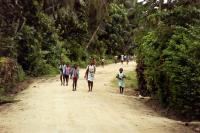 On Nosy Boraha there are just two historical sites, one of them is the Cemetery of Pirates – some guidebooks state that this is an impressive place but I could, as always, argue. Maybe it is because I haven't read enough of books about pirates and such. Well, there are mostly graves from 1800s but only one with the classic skull and crossed bones. However, it is nicely located, overgrown by some mysterious kinds of plants and with the view to the pirate island and the first Christian church in Madagascar, the second historical site on Nosy Boraha.
On Nosy Boraha there are just two historical sites, one of them is the Cemetery of Pirates – some guidebooks state that this is an impressive place but I could, as always, argue. Maybe it is because I haven't read enough of books about pirates and such. Well, there are mostly graves from 1800s but only one with the classic skull and crossed bones. However, it is nicely located, overgrown by some mysterious kinds of plants and with the view to the pirate island and the first Christian church in Madagascar, the second historical site on Nosy Boraha.
Access to this somewhat mysterious place is, albeit, difficult – and absolutely impossible on foot whilst high tide. Even during dry season, though short enough, the stones over the passage are very slippery as the ocean covers them on the high tide. The locals, to ease the way for the vazahas, had placed an old thick rail over the small tidal channel – it is, however, also under water on the hide tide thus very slippery on the low tide. The way is said to be easy to be found from the main road to the cemetery. That is not entirely accurate.
When I was approaching the signpost to the cemetery, a young local guy stopped me with a smile and asked if I wanted a guide to take me there. Now, not for free of course, so we started negotiations. The guy was speaking French and some very little English, but I decided that some company was a good idea.
After having agreed the price, we set off. First, through a damp alley of trees very close to the Ambodifotatra’s bay – I could actually see the water through a dense bush. Then, farther, the way led through a chain of canals, through the rail and slippery stones.
The way eventually diverted from the vicinity of the bay and took me via hills and yards overgrown with coconut palm trees. Few houses appeared on the way as well, and the boy knew the people.
On the way back we actually stopped at one household and my guide climbed one of the palm trees and brought couple of fresh green coconuts. They were great and refreshing and I was utterly impressed with his quality to climb that palm tree. It was truly amazing.
Had Île Sainte Marie not once been a pirates' kingdom I would not have recommended this Cemetery of Pirates as a place worth visiting. It is significantly overstated and the graves are not this Hollywood-distinctive.
|
Jun 03, 2001 02:00 PM Madagascar - Nosy Boraha (Ile Sainte Marie) - trade winds
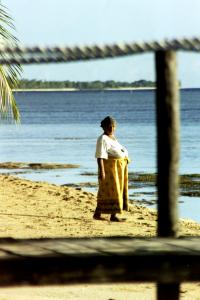 Trade winds that in this part of Indian Ocean bring wet weather usually in the night and early morning, overdid this time and brought heavy tropical rain for all day. It rained all day long with five-minute breaks just to make room for a light London-kind of shower. Rest was the Baracoa (Cuba) kind of tropical bucketing.
Trade winds that in this part of Indian Ocean bring wet weather usually in the night and early morning, overdid this time and brought heavy tropical rain for all day. It rained all day long with five-minute breaks just to make room for a light London-kind of shower. Rest was the Baracoa (Cuba) kind of tropical bucketing.
The east coast of Madagascar has, in contrary to the rest of the island, two dry seasons: in May and October (sometimes already in September and until late November). Disclaimers in many climate books however state that it may rain all year round on Île-Sainte-Marie due to the nasty trade winds from the equator. The rest of Madagascar enjoys the dry season between May and November, highlands in central part of the country only through to October.
When it rains on Nosy Boraha, there is very little to do. It is a small place with beautiful beaches and villages but nothing more. In the rain (read – bucketing) it is not possible to cycle either because the quality of the road doesn't allow for it. Neither is it possible to drink from a coconut as no-one would attempt to climb a wet palm tree. I wouldn’t I suppose. But one can always try to empty the bar sipping all the local made of rum-based cocktails...
On Madagascar, treated by the trade winds, on the east coast as I mentioned before, it may rain everyday. Correction – it rains everyday. It can rain from the smallest, lightest, thinnest, whitest and most innocent cloud. But there are different types of rains. The innocent clouds give sudden, unexpected shower that may last less than 20 seconds and this may be happening every hour during the day.
Then, of course, there is the tropical rain that accompanied with 70 mph (110km/h) winds may last days and weeks, but fortunately this kind of bucketing is usually forecasted.
|
Page:
 110 111 112 113 114 115 116
110 111 112 113 114 115 116

|
|
|
